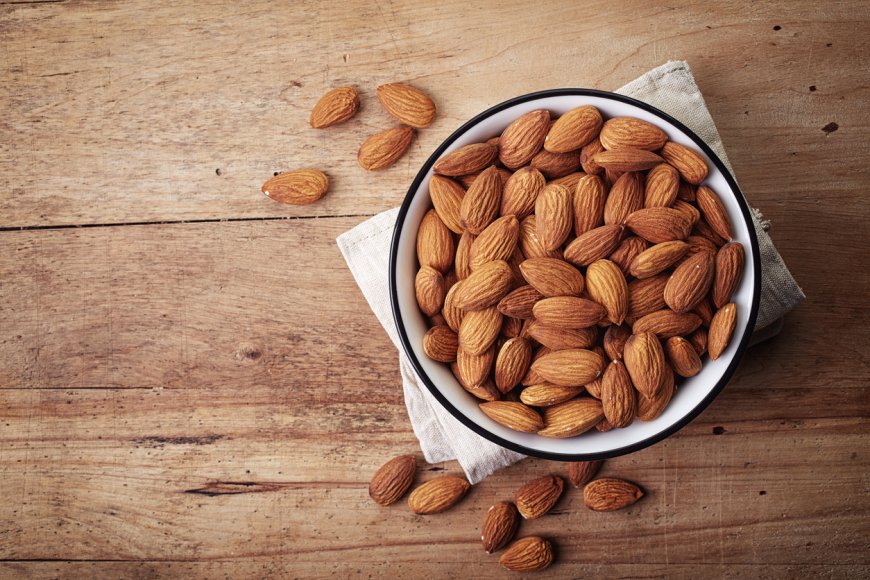Unlock the Power of Almonds: Nature's Remedy for Cholesterol Management
Explore how almonds, rich in healthy fats and antioxidants, can serve as a natural remedy to lower cholesterol levels and support heart health

Every day, we hear of the growing prevalence of heart diseases globally, and managing cholesterol levels has become a vital aspect of maintaining a healthy heart. Amongst Nature's Remedies to combat high cholesterol, one food stands out – almonds.
Belonging to the tree nut family, almonds are a powerhouse of nutrients, boasting an impressive nutritional profile. Each one-ounce (28 grams) serving of almonds provides about 163 calories, 6 grams of protein, 3.5 grams of fiber, and 14 grams of heart-healthy monounsaturated fats, which make up about 70% of the total fat content (USDA National Nutrient Database). They are also a good source of vitamins and minerals, particularly vitamin E and magnesium.
In fact, a single serving of almonds provides about 37% of the recommended daily intake of vitamin E, an antioxidant that protects your cells from damage and supports immune function (National Institutes of Health). The same serving size also delivers about 20% of the daily requirement for magnesium, a mineral crucial for nerve function, muscle contractions, and maintaining a healthy heartbeat (National Institutes of Health).
Moreover, almonds are more than just a tasty snack. Numerous scientific studies have shown that the nutrients in almonds can significantly reduce bad cholesterol levels. A study published in the Journal of the American Heart Association found that daily consumption of almonds reduced LDL cholesterol by 5% and increased HDL cholesterol by 7% in participants over a 6-week period.
Scientific research highlights the role of almonds in lowering low-density lipoprotein (LDL) or 'bad' cholesterol. LDL cholesterol is notorious for clogging arteries, which increases the risk of heart disease. Incorporating almonds into your diet can help lower these LDL levels, primarily due to their high monounsaturated fat content. Notably, these fats have been linked to a reduction in heart disease risk.
Moreover, almonds are rich in polyphenols, compounds that have antioxidant properties. These antioxidants help protect your body from oxidative stress, which can lead to high cholesterol and other health problems.
Almonds are a rich source of plant sterols, compounds that are structurally similar to cholesterol and compete with it for absorption in the intestines, thereby reducing the amount of cholesterol that enters the bloodstream. A 1-ounce serving of almonds (approximately 23 almonds) contains about 30-35 mg of plant sterols.
Scientific research has shown that plant sterols, such as those found in almonds, can lower LDL cholesterol levels by up to 14% [2]. This happens as plant sterols inhibit the absorption of cholesterol in the intestines, lessening the amount of cholesterol that makes its way into your bloodstream.
Moreover, studies have suggested that the cholesterol-lowering effects of plant sterols are dose-dependent, with higher doses resulting in greater cholesterol reduction. However, other factors such as diet, the efficacy of incorporating plant sterols into other foods, and individual metabolic differences can influence these effects.
To leverage almonds as a Nature's Remedy for cholesterol, moderation is key. Consuming around a handful of almonds daily (approximately 30g) around 25 almond pieces is recommended. It's an easy and delicious way to contribute to heart health.
Remember, while almonds can help manage cholesterol levels, they should be part of a balanced diet, coupled with regular exercise. They are not a standalone solution for high cholesterol, but rather a helpful tool in your wellness toolkit.
In the end, almonds are an excellent example of how simple, natural remedies can help us maintain our health and wellbeing. So, the next time you're looking for a heart-healthy snack, reach for a handful of almonds.
Disclaimer: The image(s) featured in this article are for illustrative purposes only and may not directly depict the specific concepts, situations, or individuals discussed in the content. Their purpose is to enhance the reader's understanding and visual experience. Please do not interpret the images as literal representations of the topics addressed.
What's Your Reaction?










































































































